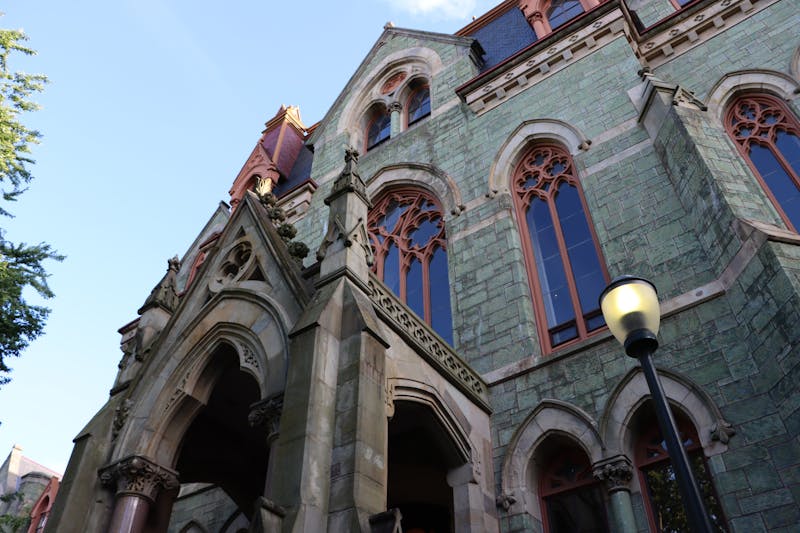Art is not just a commodity or an aesthetic experience, but a forum for bringing diverse peoples together to share and create culture.
But two Fridays ago, at the opening of the Institute of Contemporary Art's new exhibition, I found myself in a predominantly white crowd of attendees. Observing the scene at the ICA, I began to contemplate the question: "Where are all the populations of color that inhabit our diverse city?"
Jill Katz, spokeswoman for the ICA, said "Yeah, there are a lot of white people that come through the door but we want to expand the reach to the community which is many, many people."
Katz stated that "as a marketing person I'm always trying to reach out to the new audiences." She went on to say that "there are so many families living in West Philadelphia and we would love them to come to the ICA."
This interest in diversity, while inspiring, has not translated into sustained and concerted efforts to market the ICA to communities of color in Philadelphia. Part of the problem seems to be that the ICA doesn't have extensive advertising funds and, according to Katz, "its just so hard to reach households without funding so we kind of depend on word of mouth."
If word of mouth is the main mode of spreading publicity about the ICA, than the lack of diversity among patrons suggest who is and isn't being spoken to. An overwhelmingly white audience at the crowded opening of "Locally Localized Gravity," the ICA's current main exhibit, suggests that people of color are excluded from this social sphere of the Philadelphia art scene.
Furthermore, lack of funding is not a convincing enough excuse for the ICA's failure to attract to its events people who live only ten to twenty blocks westward. This is especially so when the center city and university crowds are flooding the ICA gates. The ICA is, after all, an institution in its 44th year of existence that showcases artists from across the country.
While there are cultural spaces throughout Philadelphia which cater to targeted audiences, the ICA is not like any other space.
The ICA began in 1963 as a forum for exposure to and edcuation about the contemporary art world. While it has transformed into an established Philadelphia landmark, its roots remain in education and it's still reliant on the University of Pennsylvania. As a part of our campus and as a resource for art education the ICA should move to take the necessary actions to diversify its audience base.
People from all backgrounds should be given equal opportunity to be physically represented in art spaces and participate in the making of culture that goes on there.
The Rotunda - a community gathering place for the promotion of arts and culture located at 40th and Walnut streets - has shown a commitment to democratic access to art which is not apparent at the ICA.
Now in its tenth year, the Rotunda has managed to attract audiences from all walks of life. According to patron surveys conducted in 2005, over 20,000 people attended public events at the Rotunda last year and 50 to 60 percent of the people coming through the door were from West Philadelphia.
While there are a few events at The Rotunda whose attendees are predominantly white or predominantly black, diversity is at the very least being accomplished in the aggregate.
The Rotunda's commitment to pluralism is displayed in Executive Director Gina Renzi's belief that "Our job is to diversify our marketing...I will get people to flyer Center City as well as on 52nd Street, where the markets are."
More important than marketing campaigns, however, is "the innovation of the Rotunda in asking people in the neighborhoods what they can bring in," said Andrew Zitcer, cultural asset manager for Penn's Facilities and Real Estate Services, and one of the principal founders of the Rotunda.
The 250-300 screenings, exhibits and events which take place at the Rotunda annually are curated and produced by residents from all over Philadelphia, requiring "just a conversation" with Renzi for approval.
The internally curated model of the ICA, on the other hand, creates an impermeable boundary between the art and the audience, limiting the potential for community involvement and partnerships.
"The only way to make great exhibitions is through working closely with the community," said Claudia Gould, the director of the ICA, in her flash video on the ICA Web site.
The ICA is an incredible institution with enormous transformative potential in people's lives, but if it were to reshape and broaden its definition of "community," it could contribute even more.
Yuri Castano is a College sophomore from Mexico City, Mexico. His e-mail address is castano@dailypennsylvanian.com. Bringing the n Back appears on Wednesdays.
The Daily Pennsylvanian is an independent, student-run newspaper. Please consider making a donation to support the coverage that shapes the University. Your generosity ensures a future of strong journalism at Penn.
DonatePlease note All comments are eligible for publication in The Daily Pennsylvanian.







